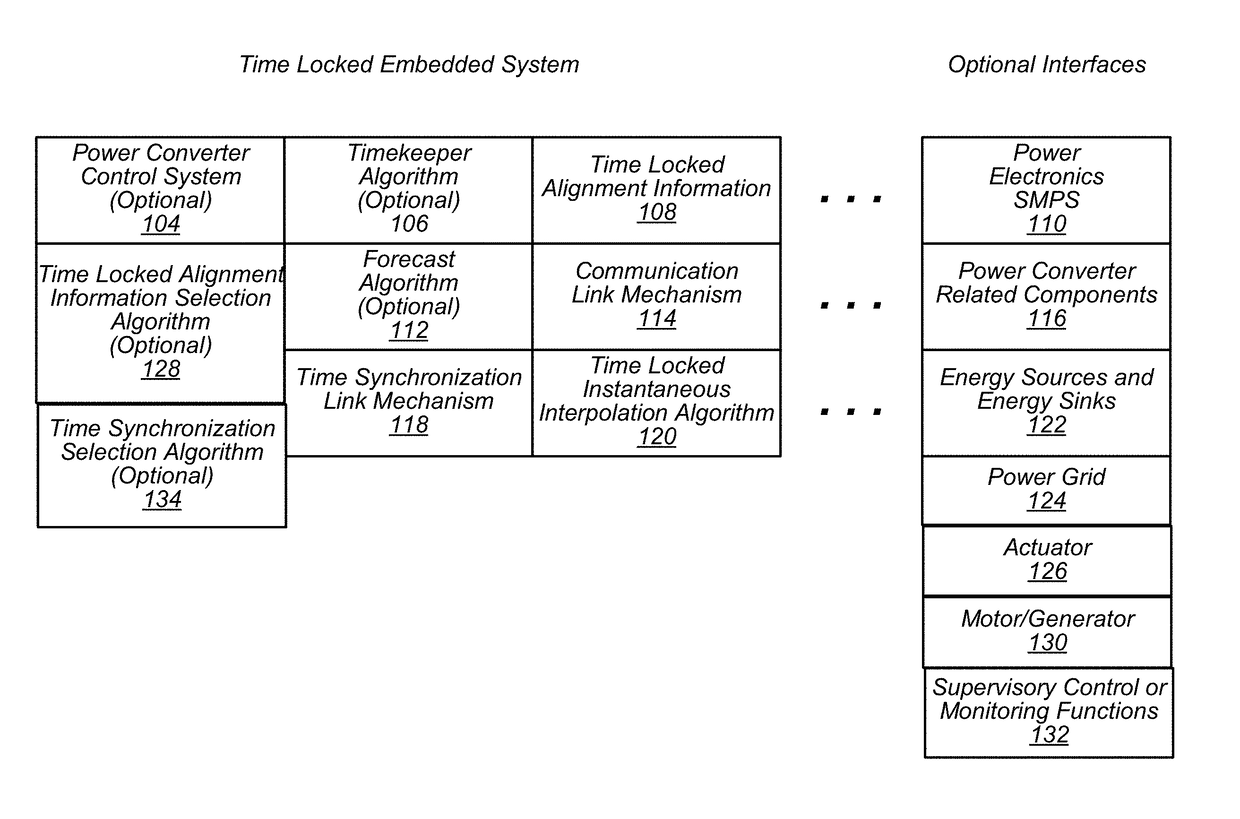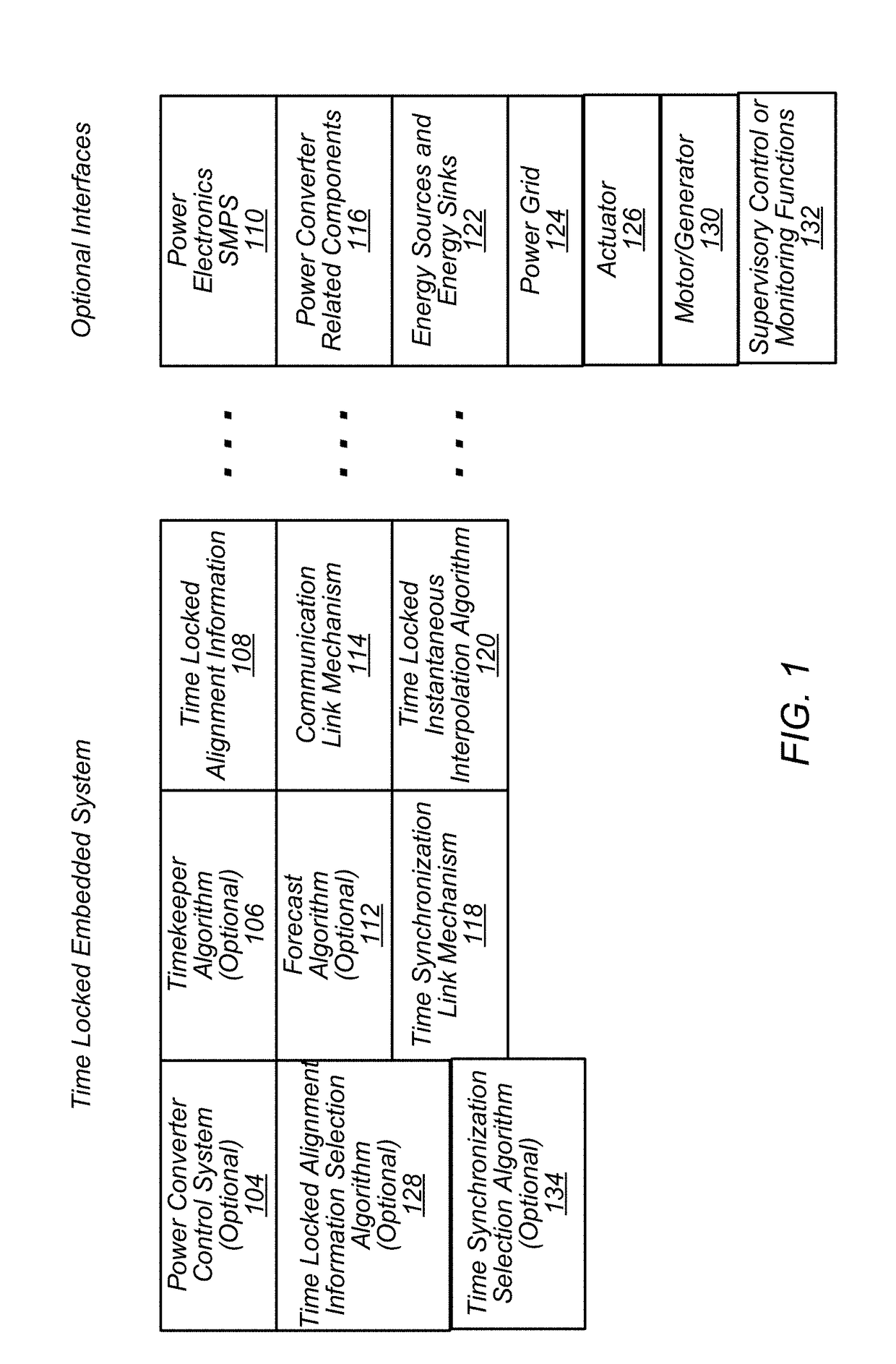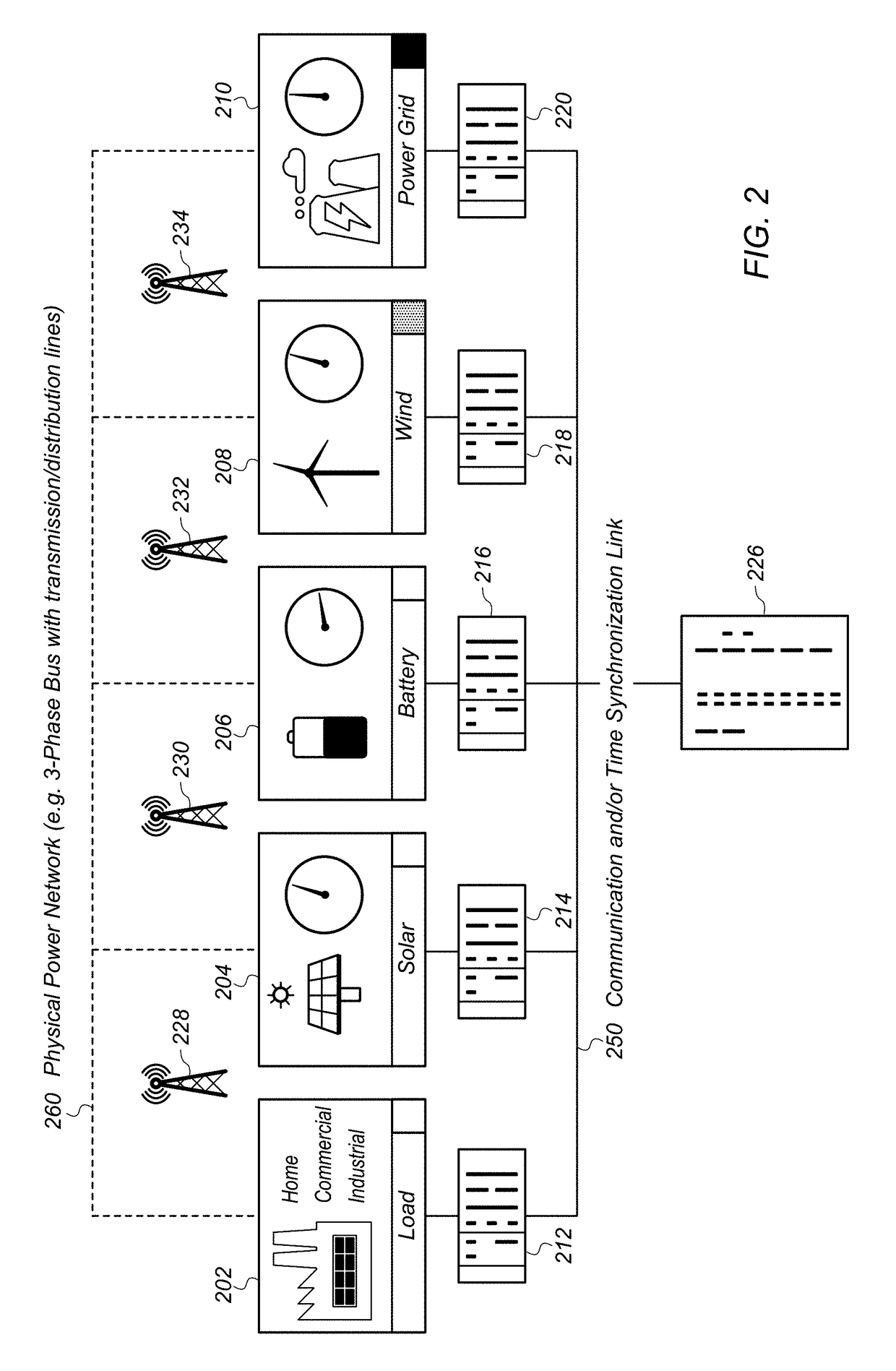Time-Locked Data Alignment in Distributed Embedded Systems
a distributed control system and embedded system technology, applied in the field of instrumentation and control, can solve the problems of limiting the amount of renewable energy that can be used, the uncertainty of the phase the difficulty of adjacent power converters to correctly track the phase angle and frequency of the grid, so as to facilitate all of the controlled power delivery devices, improve the electrical grid, and regulate the effect of voltage stabilization
- Summary
- Abstract
- Description
- Claims
- Application Information
AI Technical Summary
Benefits of technology
Problems solved by technology
Method used
Image
Examples
Embodiment Construction
[0027]It is noted that the various terms or designations for circuits / components and signals as they appear herein, for example in such expressions as “switching circuit”, “delay circuit”, “source signal”, “stimulus signal”, etc. are merely names or identifiers used to distinguish among the different circuits / components and / or between different signals, and these terms are not intended to connote any specific meaning, unless directly indicated otherwise.
[0028]Various embodiments disclosed herein may be used in at least improved power distribution systems that include a wide variety of power delivery means and / or power delivery devices. For example, various embodiments may be used in power distribution systems that include power delivery devices associated with traditional electro-mechanical power sources (e.g. coal fired plant with power delivered to the grid by synchronous generators) as well as more modern power sources (e.g. solar panels and wind, with power delivered to the grid...
PUM
 Login to View More
Login to View More Abstract
Description
Claims
Application Information
 Login to View More
Login to View More - R&D
- Intellectual Property
- Life Sciences
- Materials
- Tech Scout
- Unparalleled Data Quality
- Higher Quality Content
- 60% Fewer Hallucinations
Browse by: Latest US Patents, China's latest patents, Technical Efficacy Thesaurus, Application Domain, Technology Topic, Popular Technical Reports.
© 2025 PatSnap. All rights reserved.Legal|Privacy policy|Modern Slavery Act Transparency Statement|Sitemap|About US| Contact US: help@patsnap.com



